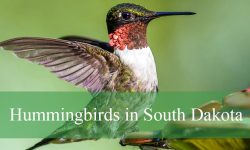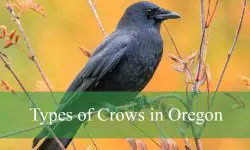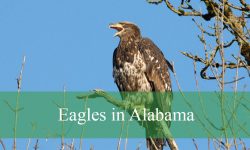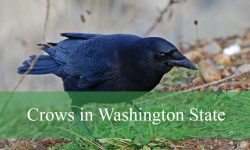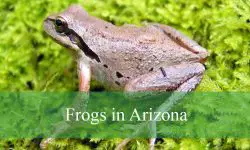Virginia is home to the brilliant Northern Cardinal, the state’s most iconic bird, but it also hosts several close relatives from the cardinal family. These birds add a burst of color to forests, fields, and backyards, making them favorites among birdwatchers.
From the vivid red Scarlet and Summer Tanagers to the dazzling blue of Indigo Buntings and Blue Grosbeaks, the cardinal family brings variety and charm to Virginia’s landscapes. Each species has its own unique song, feeding habits, and preferred habitats across the state.
This guide introduces seven members of the Cardinalidae family found in Virginia. With detailed identification tips, behavior notes, and habitat insights, it will help you recognize and appreciate these beautiful birds in the wild.
Types of Cardinals Found in Virginia
Northern Cardinal (Cardinalis cardinalis)
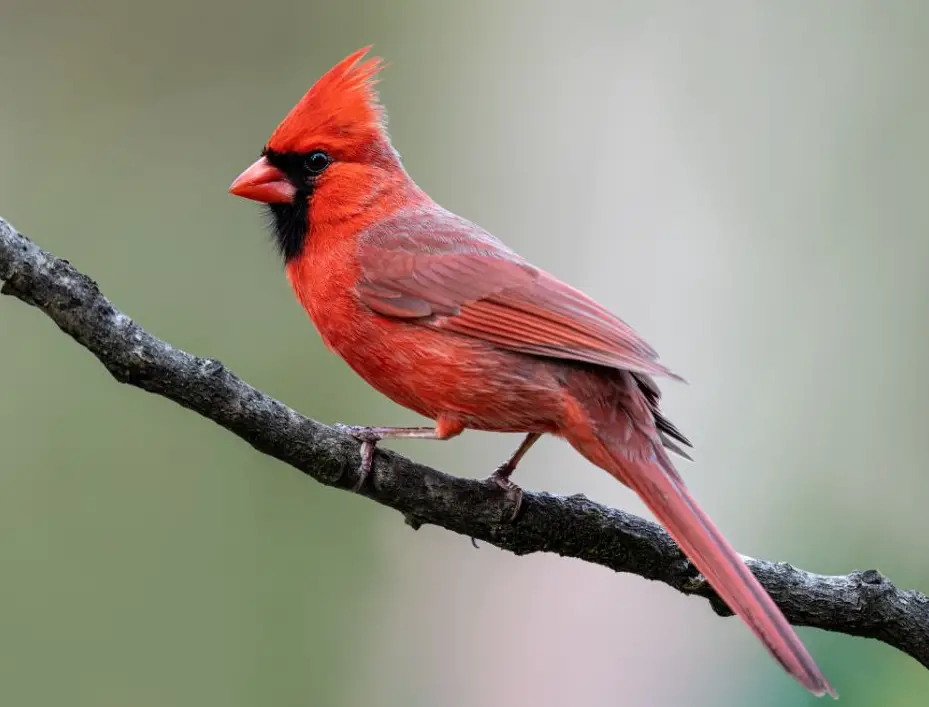
The Northern Cardinal is Virginia’s most recognizable songbird, famous for the male’s brilliant red plumage and the female’s soft brown tones with hints of red on the wings and crest. Both sexes have a distinct crest on their heads and a thick, orange-red bill that makes them easy to identify. Measuring about 8–9 inches in length, they are medium-sized songbirds that often perch in shrubs or low trees, giving birdwatchers clear views.
In Virginia, Northern Cardinals are permanent residents, thriving in both urban and rural environments. They are frequently seen in backyards, gardens, woodlands, and along forest edges. Their loud, melodic whistles are a common sound in the state, especially in early mornings during spring and summer.
Their feeding behavior is quite adaptable. They primarily eat seeds, berries, and fruits, but they also consume insects during the breeding season to provide protein for their young. Cardinals often visit bird feeders stocked with sunflower seeds, where they use their strong beaks to crack shells.
Although not predators, cardinals are cautious birds and will aggressively defend their nesting territory. Males are especially territorial, sometimes attacking reflections in windows, mistaking them for rivals. This protective behavior helps ensure the survival of their young in Virginia’s varied landscapes.
Summer Tanager (Piranga rubra)
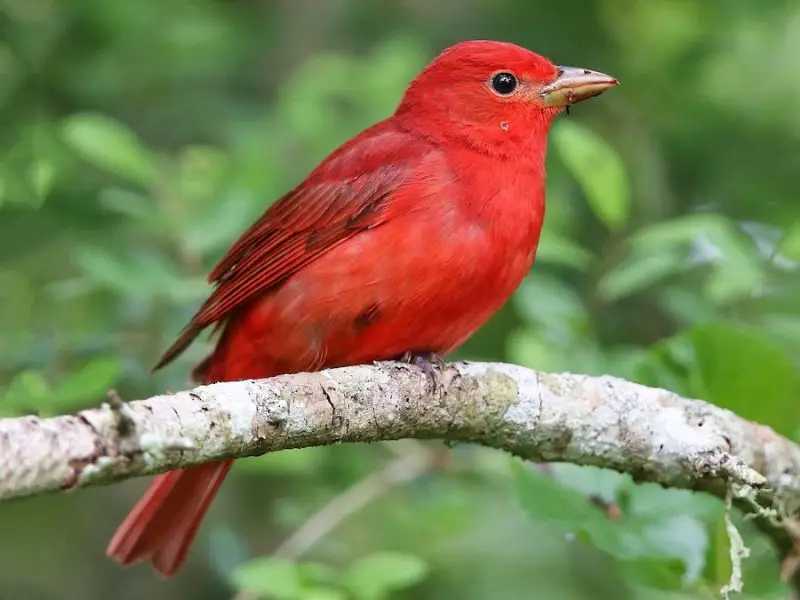
The Summer Tanager is another vibrant member of the Cardinalidae family, though it is less common in Virginia compared to the Northern Cardinal. Adult males are completely red, lacking the black facial markings of cardinals, while females and immature males are yellowish with olive tones. They measure around 7 inches in length and have a more slender appearance than true cardinals.
In Virginia, Summer Tanagers are typically found in the warmer months, preferring open woodlands, orchards, and areas with tall deciduous trees. They are more common in the southern and central regions of the state during the breeding season. Their call is a soft, robin-like song that can often be heard from treetops.
Unlike many seed-eating cardinals, Summer Tanagers have a strong preference for insects, especially bees and wasps. They skillfully catch them in midair or pluck them from vegetation, removing stingers by rubbing the insect against a branch before eating. This feeding behavior makes them valuable controllers of insect populations.
Their secretive habits mean they are often heard before being seen. They rarely visit feeders, but careful observers can spot them in Virginia’s woodlands, particularly during late spring and summer. They migrate south for winter, leaving the state by early fall.
Scarlet Tanager (Piranga olivacea)
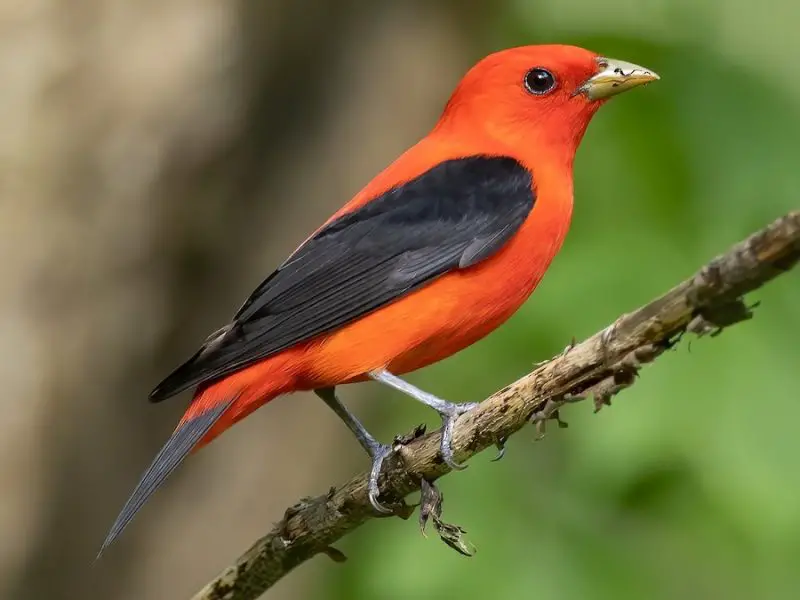
The Scarlet Tanager is one of the most striking migratory songbirds to pass through Virginia. Breeding males are a brilliant scarlet red with contrasting jet-black wings and tails, while females and non-breeding males are olive-yellow with darker wings. Their medium size, about 6.5–7.5 inches, and bold coloring make them unmistakable in the right season.
In Virginia, Scarlet Tanagers are seen mostly in spring and fall migration, although some breed in mature deciduous forests, especially in the mountainous western regions. They prefer dense canopies, making them harder to spot despite their bright plumage. Birders often rely on their distinctive song, which resembles a robin’s tune sung in a more “buzzy” tone.
Their diet is a mix of insects and fruits. They often forage high in the forest canopy, snatching beetles, caterpillars, and other insects, while also enjoying berries when available. During migration, fruits play an important role in fueling their long journeys.
Scarlet Tanagers are elusive birds that rarely visit feeders, but dedicated birdwatchers in Virginia can find them in state parks and forest preserves. Their preference for large tracts of woodland makes them sensitive to habitat loss, and spotting one is considered a rewarding highlight for birders.
Indigo Bunting (Passerina cyanea)
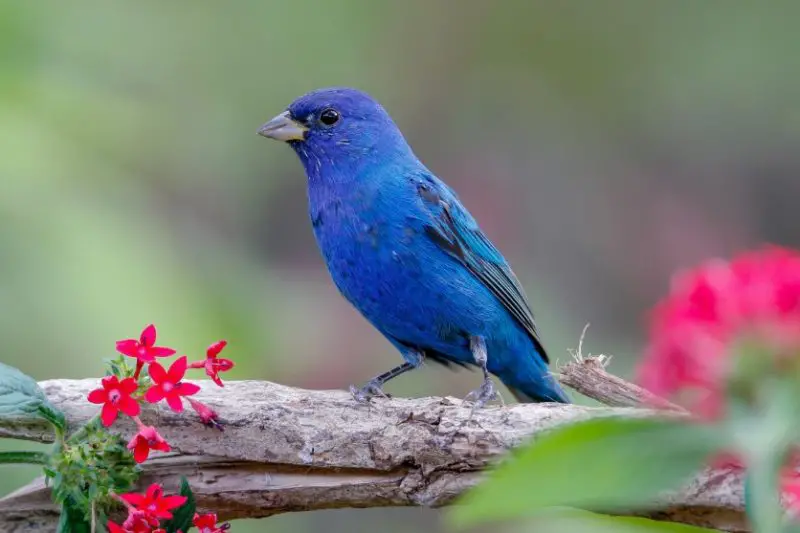
The Indigo Bunting is a dazzling member of the cardinal family, with males covered in vibrant blue plumage during the breeding season, while females and juveniles are brown with faint streaks. They are small birds, measuring about 5 inches long, with a short, conical bill typical of seed-eaters.
In Virginia, Indigo Buntings are widespread during the warmer months, arriving in spring to breed. They are commonly found along forest edges, roadsides, weedy fields, and open habitats with shrubs. Unlike scarlet and summer tanagers that prefer forest canopies, buntings are more often seen at eye level, perched on fences or low branches.
Their diet consists of seeds, small fruits, and insects. Males often sing persistently from exposed perches to defend territories and attract mates. Their high-pitched, musical song is a common sound in Virginia’s countryside during late spring and summer.
Although small, Indigo Buntings are highly migratory, traveling at night and using the stars to navigate. In Virginia, they nest in low shrubs or tall grasses, feeding their young primarily with insects. Their adaptability to open habitats makes them one of the most easily observed members of the cardinal family in the state.
Blue Grosbeak (Passerina caerulea)
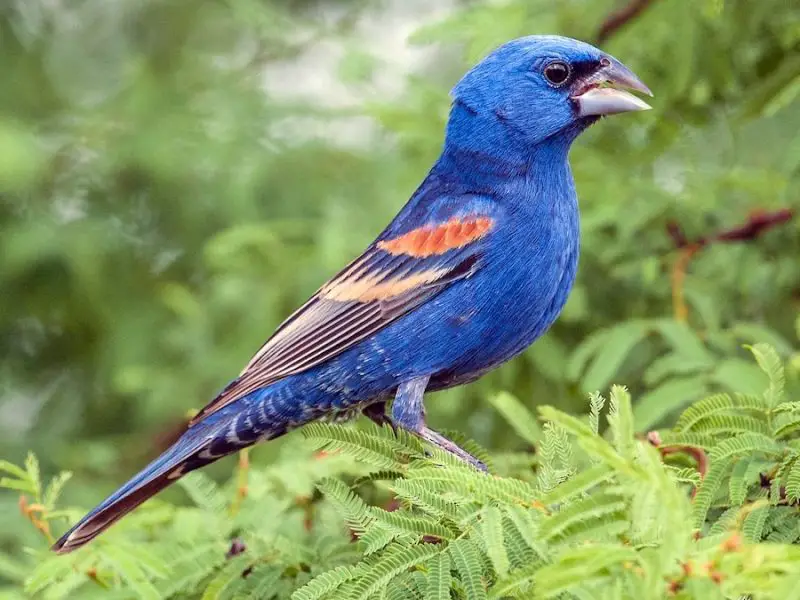
The Blue Grosbeak is a striking bird found in Virginia during the warmer months. Adult males are a deep, rich blue with two prominent chestnut wing bars, while females are mostly brown with subtle blue hints on the shoulders and tail. They are larger than Indigo Buntings, measuring about 6–7 inches long, with a thick, conical bill suited for cracking seeds.
In Virginia, Blue Grosbeaks prefer brushy fields, forest edges, hedgerows, and overgrown pastures. They are most often seen in the Piedmont and coastal plain regions during spring and summer. Their song is a sweet, warbling series of notes, similar to but richer than the Indigo Bunting’s tune.
Their diet includes seeds, grains, and insects, making them opportunistic feeders. They often forage on the ground or in low vegetation, searching for grasshoppers, beetles, and other insects during breeding season. In fall, they shift to a heavier seed diet before migrating south.
Blue Grosbeaks are secretive birds, often perching quietly in dense shrubs. Despite their bold coloring, they can be difficult to spot without patience. In Virginia, they are best seen from late April through September before heading to Central America for the winter.
Rose-breasted Grosbeak (Pheucticus ludovicianus)
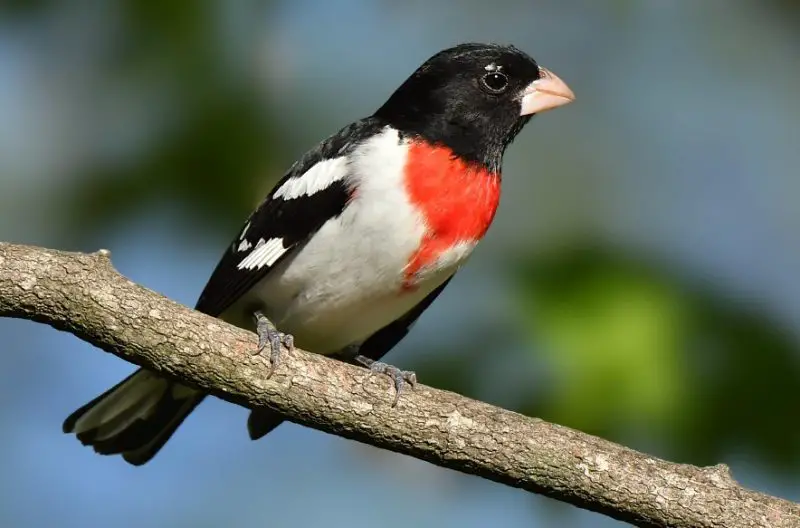
The Rose-breasted Grosbeak is a migratory bird that passes through Virginia in spring and fall, though some may breed in the western mountains. Adult males are unmistakable, with black backs, white bellies, and a bold red triangular patch on the breast. Females and young birds resemble large sparrows with brown streaks, a white eyebrow, and a massive bill.
These grosbeaks prefer deciduous forests, woodland edges, and gardens during migration. They are often seen feeding in treetops or visiting backyard feeders. Their song is a sweet, melodic warble often described as sounding like a more refined version of a robin’s song.
Their diet is diverse, consisting of insects, seeds, and fruits. During migration in Virginia, they are especially drawn to berry bushes and feeders stocked with sunflower seeds. They also consume beetles, caterpillars, and other invertebrates to maintain energy for long flights.
Rose-breasted Grosbeaks are not aggressive but can be vocal when defending feeding spots. For birdwatchers in Virginia, spotting a male grosbeak in full breeding plumage during spring is a special reward, as their visits are brief but spectacular.
Dickcissel (Spiza americana)
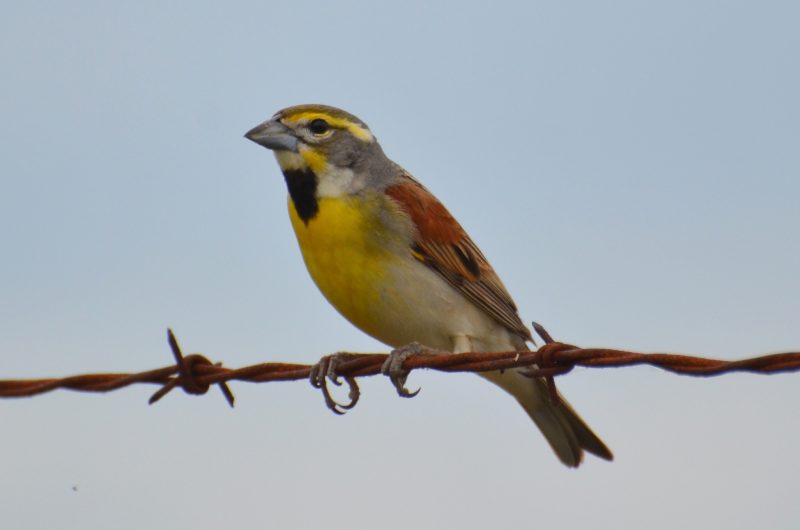
The Dickcissel is a less common member of the cardinal family in Virginia but occasionally appears during migration. These sparrow-like birds measure around 6 inches and feature a yellow breast, grayish-brown back, and a black throat patch on males. Females are duller, lacking the bold throat marking, which makes them harder to identify at first glance.
Dickcissels favor open habitats such as grasslands, meadows, and overgrown fields. While Virginia is not a major breeding ground for them, migrating flocks sometimes pass through the state in late spring and early fall. Their call, a sharp “dick-dick-ciss-ciss,” gives them their name and is often heard before they are seen.
They primarily eat seeds and insects. During breeding season, insects such as grasshoppers and caterpillars form an essential part of their diet. In Virginia, migrating Dickcissels may forage in agricultural fields and weedy areas, blending in with sparrow flocks.
Though uncommon, Dickcissels are notable for their flocking behavior during migration. Birders lucky enough to encounter them in Virginia often find them perched on fence posts or tall weeds, scanning for food. Their rarity in the state makes each sighting an exciting event for enthusiasts.
Best Time and Place to See Cardinals in Virginia
Virginia offers birdwatchers a wonderful opportunity to observe cardinals and their relatives throughout the year. The Northern Cardinal, being a permanent resident, can be seen in every season, especially in backyards, city parks, and forest edges across the state. They are particularly active at dawn and dusk when their songs fill the air.
For migratory members of the cardinal family, the best time is during spring and fall migration. Scarlet Tanagers, Rose-breasted Grosbeaks, and Dickcissels pass through Virginia during these seasons, often stopping in forests, meadows, and shrublands to rest and refuel. April through May and late August through October are prime months for spotting them.
Specific places such as Shenandoah National Park, Great Dismal Swamp National Wildlife Refuge, and Back Bay National Wildlife Refuge are excellent locations to see a variety of cardinal species. Open fields and hedgerows are ideal for Indigo Buntings and Blue Grosbeaks, while mature forests are the best habitats for Scarlet Tanagers and Rose-breasted Grosbeaks.
FAQs about Cardinals in Virginia
Are Northern Cardinals found year-round in Virginia?
Yes, Northern Cardinals are permanent residents in Virginia and can be seen throughout the year in both urban and rural areas.
When is the best season to see Scarlet and Summer Tanagers in Virginia?
Scarlet Tanagers are most visible during spring and fall migration, while Summer Tanagers can be found during the breeding season in late spring and summer.
Do cardinals in Virginia visit backyard feeders?
Northern Cardinals, Rose-breasted Grosbeaks, and sometimes Indigo Buntings readily visit feeders, especially those stocked with sunflower seeds. However, Summer and Scarlet Tanagers usually do not visit feeders.
Where are Indigo Buntings most commonly seen?
In Virginia, Indigo Buntings thrive in open fields, along roadsides, and forest edges, where males often sing from exposed perches in summer.
Are Dickcissels common in Virginia?
No, Dickcissels are considered uncommon in Virginia. They are mostly spotted during migration in open grasslands and weedy fields.

